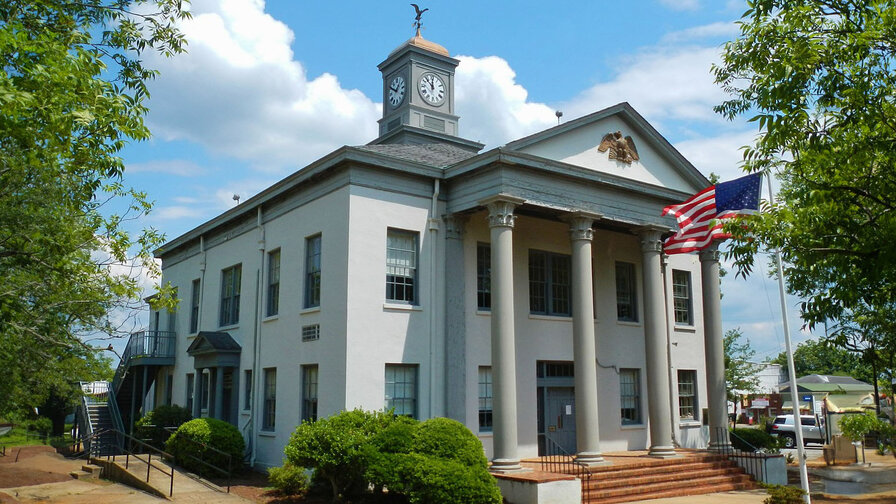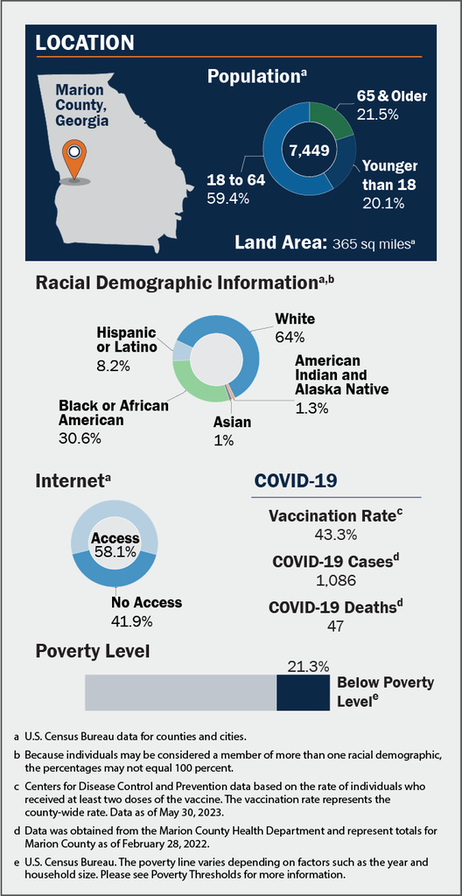Focus on Community: Marion County, Georgia
We visited six locations to report on the experiences of local program administrators, government officials, and other community members during the pandemic. Our fourth report is on Marion County, the second rural county we visited. Marion County has a population of 7,449 with a land area of 365 square miles. The county government, small businesses, and individuals received more than $38.8 million from 27 pandemic relief programs and subprograms during the first 18 months of the pandemic. This report provides a closer look at six of the federal programs, from six federal agencies, that aimed to respond to and ease the effects of the pandemic on the community.

Marion County's unique experience
By October 2021, the county had experienced 960 recorded cases of COVID-19 and 38 deaths. By February 2022, the numbers had increased to 1,086 cases and 47 deaths. Some officials and individuals explained that their challenges centered on staffing and maintaining essential positions. For example, Board of Commissioners officials said high turnover in the county manager position hindered efforts to identify federal and state grants that could have benefited the community. Also, part-time officials noted that it was difficult to juggle their community duties and full-time employment during the pandemic.
Additionally, the Emergency Medical Services (EMS) struggled to fill part-time openings due to the county’s low wages. To improve staff retention, Georgia distributed $330,104 from the U.S. Department of the Treasury’s Coronavirus Relief Fund to Marion County for EMS payroll and benefits.
Federal programs’ impact on the Marion County community
County officials used federal funding in many ways to help respond to the pandemic. For example:
The Buena Vista Housing Authority received $36,366 from the U.S. Department of Housing and Urban Development’s Public Housing Operating Fund to prevent, prepare for, and respond to COVID. The funds allowed for continued management, equipment purchases, and related rehabilitation activities for its 79 housing units.
Leaders from a county nursing home reported that Provider Relief Fund payments from the U.S. Department of Health and Human Services were integral to their pandemic response, but that the payments were insufficient to address long-term costs related to COVID.
Officials shared that the Marion County School System spent approximately $1.4 million in U.S. Department of Education Elementary and Secondary School Emergency Relief Program funds for salaries, benefits, and bonuses to ensure continuity of core staff and services.
The federal government funded these programs to ease the effects of the pandemic that posed a serious threat to the health or welfare of the community. Read the full report.
Impact on Communities
To truly understand how the pandemic impacted people on the ground across the country, you have to get out into communities—both big and small, rural, urban and suburban—to appreciate the unique circumstances Americans faced. We did just that, examining six communities across the U.S. The report we reference on this page highlights one of those six communities’ experiences.


